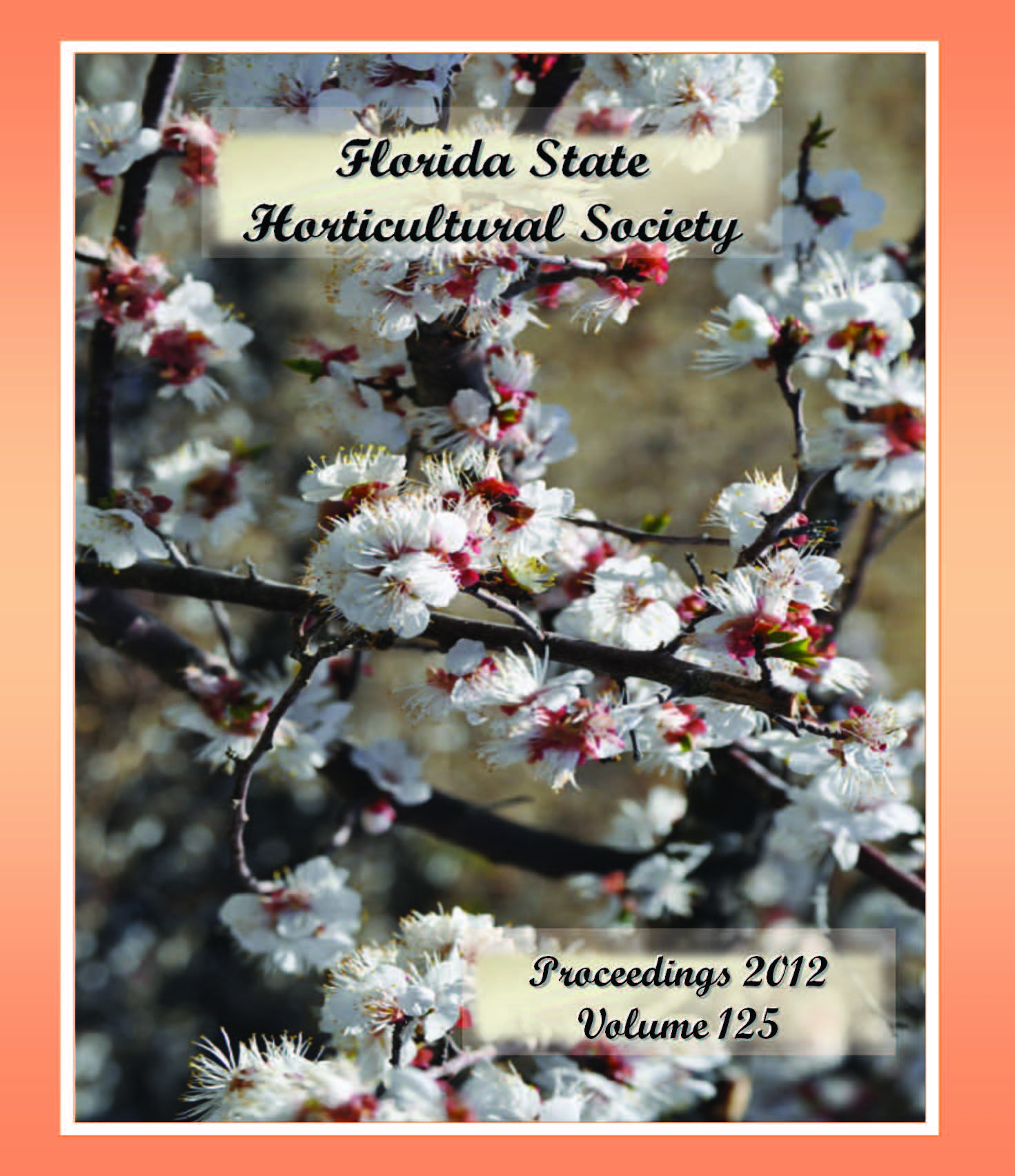Published 2012-12-01
Keywords
- Aeschynomene americana,
- Camelina sativa,
- crop rotation,
- Helianthus annuus,
- oil seed crops
Abstract
In the absence of soil fumigation, developing crop rotations to mitigate the impact of soilborne pests, improve soil quality, and generate additional revenue is critical for the continued existence of the Florida vegetable industry. Rotating tomato with oilseed crops has demonstrated potential, but its economic feasibility is limited by high input costs, particularly nitrogen fertilizer. A three-crop rotation consisting of jointvetch (Aeschynomene americana) grown as a green manure crop, sunflower (Helianthus annuusL.), and camelina (Camelina sativaL.) was evaluated for its impact on soil C and N and yield of camelina. Main treatments were a summer green manure consisting of a 67- or 88-day-old jointvetch crop and a bare ground fallow. Sunflower was planted on 22 Oct. 2010 and camelina on 24 Jan. 2011. The sunflower crop received P at 11.2 kg·ha–1(10 lb/acre) and K at 43.7 kg·ha–1 (39 lb/acre). Split plots of N at 79.5 or 157.9 kg·ha–1 (71 or 141 lb/acre) were added during the sunflower crop. No additional fertilizer was applied to the camelina crop. A 67-day-old jointvetch crop returned N and C at 204 and 2,816 kg·ha–1 (182 and 2,514 lb/acre), respectively. An 88-day-old crop returned N and C at 254 and 3,689 kg·ha–1(227 and 3,294 lb/acre), respectively. Camelina yield in plots where jointvetch was previously grown was 655 to 706 kg·ha–1 (585 to 630 lb/acre), which was significantly higher than yield in plots that received a summer tillage fallow [451 kg·ha–1 (403 lb/acre)]. The results demonstrate the potential to improve soil C and N and reduce subsequent fertility inputs by combining a tropical legume grown as a summer manure crop with sequential plantings of oilseed crops.

